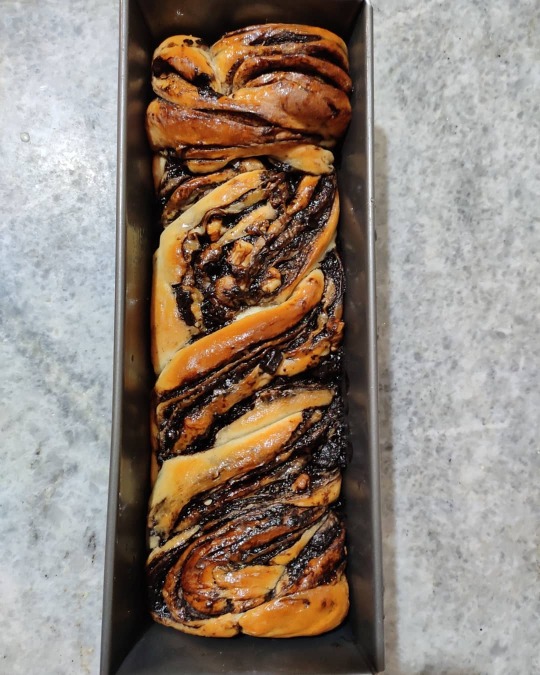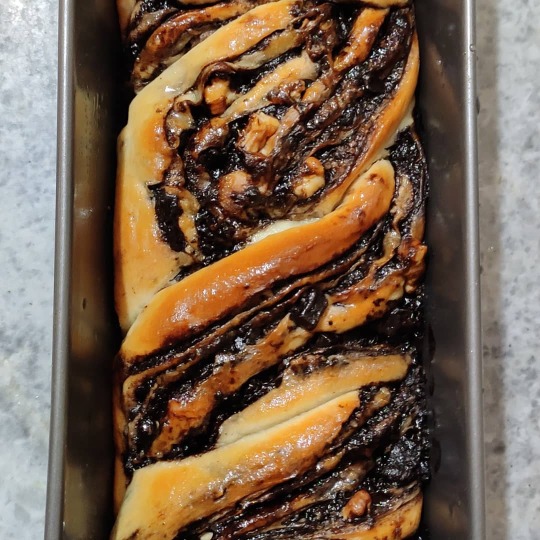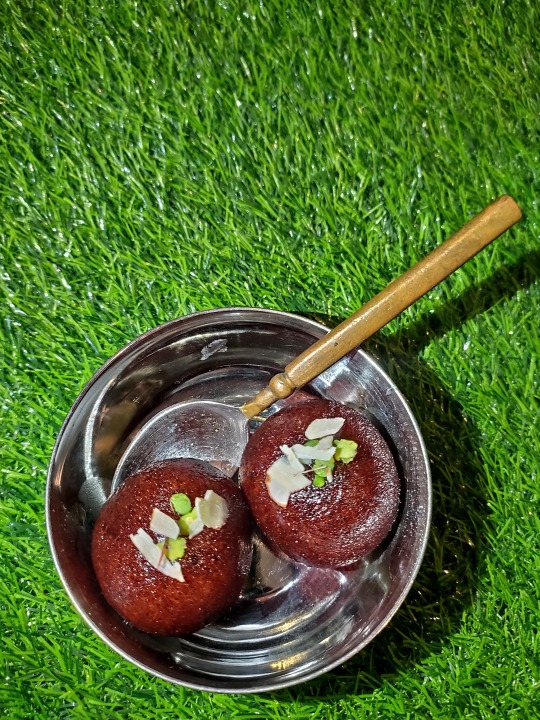Photo

Babka bread! 🍞 Babka, a sweet braided bread, originated in the Jewish communities of Poland and Ukraine. Very popular in Israel. https://www.instagram.com/p/CRs8uGIMDMSKQIQv7V43Kk2fIpll7T5jw8m1Mw0/?utm_medium=tumblr
0 notes
Photo

Babka bread... The close up and crumb shot! https://www.instagram.com/p/CRs-i-ws3FuJHFk_QCA1DP66DTwCrUi8UB2tu80/?utm_medium=tumblr
0 notes
Photo

"If you are in a beautiful place where you can enjoy sunrise and sunset, then you are living like a lord" - Nathan Phillips https://www.instagram.com/p/CRbLYNyM7qqrlRxgVeYKNK8nA8EKHba1T73Etk0/?utm_medium=tumblr
0 notes
Photo

Sunbird! https://www.instagram.com/p/CRN3AxfsU_-SQEf3kHRl721VpnicBrGfqeradA0/?utm_medium=tumblr
0 notes
Photo

"There is nothing more musical than a sunset" - Claude Debussy https://www.instagram.com/p/CPVrIO-sZBsXBRlTVrHUleKzfDZ5Fs0RSgZeSM0/?utm_medium=tumblr
0 notes
Video
"All sorrows are less with bread" ~ Miguel de Cervantes Saavedra. https://www.instagram.com/p/CPBT9jMAptjO0i0HRzupJGIsU_3GIFZRH3k05A0/?utm_medium=tumblr
0 notes
Photo

Sitaphal Rabdi shots! 🍈🍈🍈 https://www.instagram.com/p/CMo0094ssvJ_dJiq6B8k_Ag95bAXmk6klPbRYY0/?igshid=xkx6umszdgoy
#sitaphal Rabdi #sitaphal #custardapple #rabdi #sitaphalbasundi #dessert #indiansweet
0 notes
Text
THE UNTOLD STORY OF GULAB JAMUN

Every Indian is fond of desserts. One definitely cannot find enough reasons to eat desserts. These are eaten daily by almost every Indian post their dinner. Kuch meetha ho jaaye is a common phrase used by Indians post their dinner. Many also find their dinner incomplete without meetha. Be it festivals or any other celebration like marriage or birthday parties desserts are always on the list.
Every Indian’s and my personal favorite Indian dessert is Gulab Jamun. It is one of the most delectable desserts in India. Liked by individuals belonging to all age group, these are small deep-fried dumplings made primarily with khowa or mawa and dipped in sugar syrup called chashni which is often flavored with rosewater (as the name suggests “gulab”). The dough is prepared by kneading khowa and maida. My mother fills these balls with some chironji or charoli to make them sweet from the center too and this also makes their heart really soft and tender. These little balls are then fried in ghee till they turn golden-brown in colour and are then transferred to the sugar syrup.
These little balls of happiness are so soft that they dissolve in one’s mouth. These are often made on festivals and also on weddings.
Surprisingly, gulab jamun did not originated in India. Folklores have that it originated in Persia (present day Iran). Let’s have a look at the etymology of Gulab Jamun – gul is the Persian term used for rose or flower and aab is the Persian term used for water (sugar syrup of gulab jamun is flavored with rose water). Jamun is the name of a local fruit in India and is similar in shape and size to that of gulab jamuns. It was introduced among the Indian masses in medieval era during the reign of Mughal ruler Shah Jahan who is also credited for the creation of Taj Mahal, one of the Seven Wonders of the World. Gulab Jamun, hands down, can absolutely be called the eighth Wonder of the World. It is believed that gulab jamuns were accidently prepared by Shah Jahan’s royal chef or as it is said in Muslim households, khansama. According to folklores, they seem to have been inspired by the Persian and Turkish traditions. Interestingly, the “Bameih” of Persia and the “Tulumba” of Turkey both resemble Gulab jamuns in various aspects. Both these dishes are small deep-fried chunks of dough which are dipped in sugar syrup. Bamieh is made from all-purpose flour and is deep fried which is then soaked in sugar syrup. The sugar syrup of Persian Bamieh is traditionally flavored with rose water similar to that of gulab jamuns. Tulumba is very much similar to Bamieh. Again all-purpose flour is the key ingredient in this dessert. These are also steeped in sugar syrup after being deep-fried. However, these dishes didn’t have khowa as one of their ingredients and were also served cold. The desi version of these, i.e., gulab jamuns incorporated khowa and elaichi (cardamom) and are often served hot.
Culinary historian Michael Krondi also supports the above mentioned story of gulab jamun in his book The Donut: History, Recipes, and Lore from Boston to Berlin. He writes, “The Muslim invaders also brought a round fritter that eventually became gulab jamun. (Gulab comes from the Persian word for rosewater, while jamun refers to a local fruit of roughly this size.) In India, this juicy, sweet-scented morsel is about the size of a Ping-Pong ball. The recipe is more complex than in the Middle East, requiring a mixture of dried and fresh milk thickened with flour. But as in Iran, the mixture is fried and soaked in rosewater syrup.”
There is another story of this famous dessert and that is linked to the Arabic dessert Luqmat Al-Qadi also famous by the name of Lokma. Luqmat al-qadi is translated as “judge’s morsels” or “judge’s bites”. It was believed that these sweet lumps of dough were so delectable that they had the ability to sway the opinion of a judge. These are yeast-leavened dough balls made primarily from all-purpose flour which are deep-fried in oil and then dipped in sugar syrup which is infused with rosewater.
There are also many regional varieties of Gulab jamuns. One amongst them is Bengal’s favourite Ledikeni. The story associated with ledikeni dates back to the British Raj. The most popular story about it gives the credit of its preparation to Bhim Chandra Nag, the ace confectioner of Kolkata. This dish was prepared in the honour of Lady Canning, who was the wife of the Governor General Lord Charles Canning and was coming to India to be with her husband. Some also believe that ledikeni was prepared on the occasion of Lady Canning’s birthday. There are also stories that Behrampur’s confectioners made it after the Indian Rebellion of 1857 in honour of Canning and his wife. The word ledikeni is believed to be the local pronunciation or mispronunciation of “Lady Canning” in whose honour this sweetmeat was prepared. Unlike gulab jamuns which are primarily made from khowa, ledikeni has chhena as its key ingredient. It also has khowa as one of the ingredients. These are also shaped into small round balls, then deep fried in ghee and steeped in sugar syrup.
Another popular version is Pantua, which again belongs to Bengal. Some find it similar to ledikeni for the fact that Pantua is also primarily made of chenna and mixed with semolina and flour. Shaped into little balls, these are then deep fried and soaked in sugar syrup.
The most popular variant of gulab jamun is kala jamun. It is very popular in Bihar and Bengal. Kala jamun or kalo jaam are very similar to gulab jamun but differ in color, texture and ingredients. These are blackish in color as its name suggests unlike gulab jamun which are golden-brown in color. Kala jamuns are fried for longer duration than gulab jamuns. This provides them with their distinctive blackish color and a crispier crust. The main difference between gulab jamun and kala jaumun is that unlike gulab jaumun, kala jamun contains paneer (Indian cottage cheese). However, kala jamun also contains khowa in it. One of the most distinct characteristics of kala jamun is that its center is filled with one or two saffron threads which give it a very appealing color at the center which is ordinarily not done in gulab jaumun.
Whatever it be, ledikeni, pantua or kala jamun, gulab jamun definitely has my heart.
2 notes
·
View notes